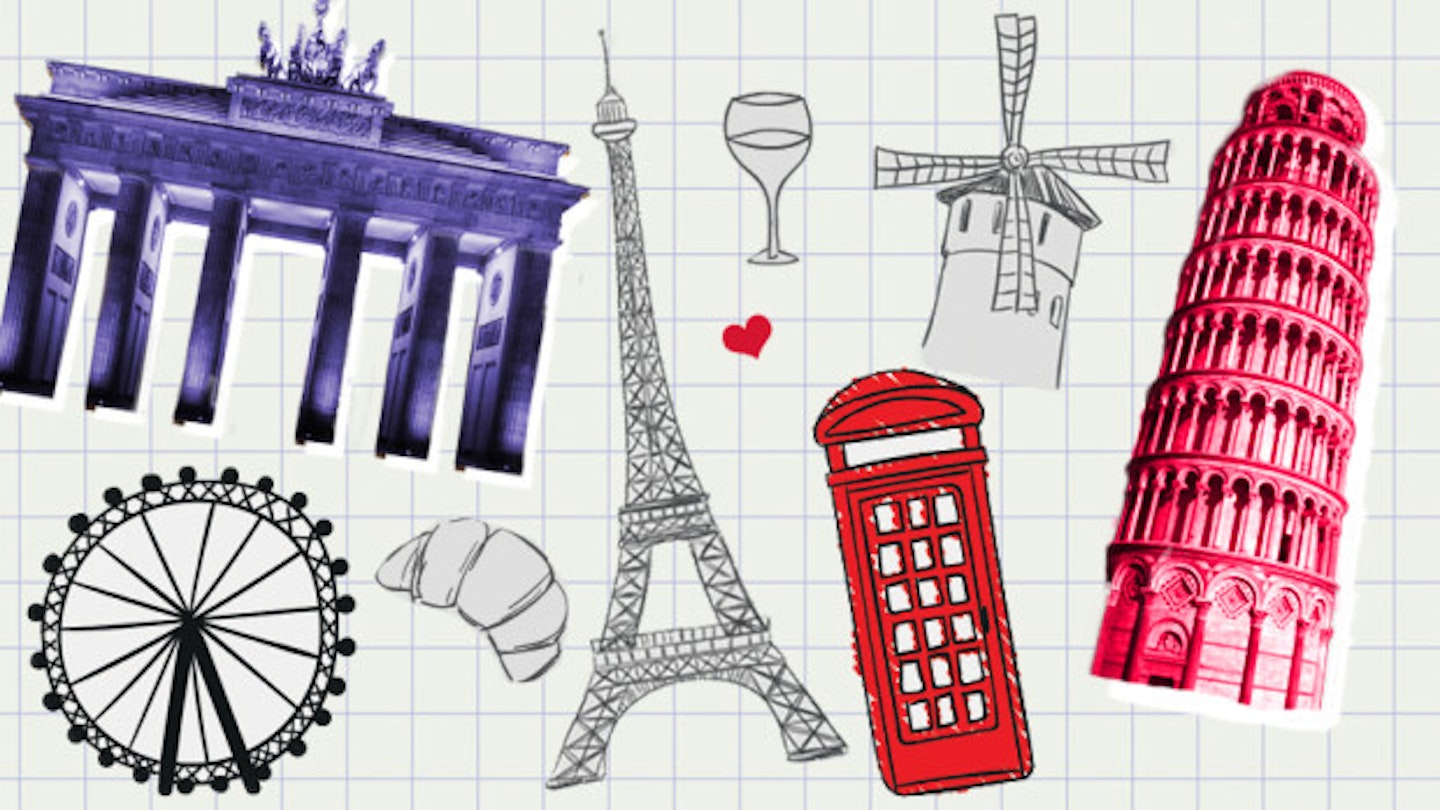This summer I went interrailing around nine countries and it was both amazing and stressful in varying bouts. I think imagined that I would be crossing borders in Wi-Fi-equipped, leather-seated, high speed domes whilst a porter wheeled around a tray of fresh, free croissants. Or that I would spend less than two month’s wages on five weeks travelling. But alas, none of this was meant to be. I did however, manage to sweet-talk my way out of a train fine, master the perfect pee-squat for those match-boxed sized bathrooms and arrange a European schedule so tightly-packed that if Rihanna should wish to hire me as her next European tour manager tomorrow (rates negotiable Ri) I genuinely know I could do the job.
How Interrailing Actually Works
Basically, you have two types of tickets for those within the EU: a global pass which gives you unlimited travel, for different prices and lengths of time (10 days within 22 days or 22 days continuous for example) or you can get a one country pass for which there are price options depending on your destination. A the minute a one month continuous second class ticket comes in at £298 if you’re under 25 (not including possible postage costs and optional insurance). Always buy from the official website to secure the best price.
Planning The Dream Route
After you’ve bought your ticket and finished mopping up the last few tears with your bank balance sheet, it’s time to plan the perfect trip. 'Boring!' I hear you cry. And yeah, interrailing should be wild and spontaneous and you deserve to live like Vanessa Hudgens in Spring Breakers, but you actually need to plan. A lot. Otherwise you could be broke and stranded - which I narrowly avoided. What the interrail folk don’t shout about is that many trains actually require you to reserve a seat even with your interrail pass. In France, Spain and Italy, these reservations can cost up to £20 extra on the day.
The official website advises reserving tickets 60-90 days in advance but unless you are Rihanna who the hell knows what they’re doing for lunch let alone three months in advance? I would say sort out a concrete route around two to three weeks before leaving England. A middle-man company can arrange reservations for you online meaning you can rock up to each train without worrying if you’re going to get a seat. I didn’t do this, resulting in a lot of time wasted queuing up in stations planning my next route. One of those stations was Barcelona (beautiful, bureaucratic Barcelona) during which time I’d considered flying home/taking a Segway by the time I’d made my reservation.
Good Trains, Bad Trains, Ugly Trains
Sorry France and Italy but your trains are wank – travelling for hours crammed into plug-less, space-free boxes in the 30 degree heat with no air-con doesn’t generally go down too well for sane people with big bags and no money. Germany, however, with its reputation for efficiency, was a dream. Most trains were equipped with plugs, the seats were bum-friendly and there was the option to pay for Wi-fi. The same goes for Denmark, Slovenia and Croatia.
Money and Hostels
Trains are generally very safe for lone female travellers, but always keep your valuables close to you as well as an eye on your bag. Every train (bar one in Germany) had enough space to store large backpacks. Consolidating money on a pre-paid card is also recommended because if it gets nicked the company replaces it and exchange rates are generally better than that the high street. I used ACE FX and topped it up online as I travelled around.
The great thing about inter-railing is that it gives you the freedom to travel exactly how you’d like in between the journeys. If you’re travelling with a buddy or boyfriend like I was, consider using sites like Booking.com in peak season to cut down on accommodation costs. I found that the most popular hostels were around 10 to 20 Euros more expensive than a nice room for two.
Top Train Tips
When buying your Inter-rail pass, decide whether you want to slum it (second class) or live luxe (first class) because you can’t upgrade your seats across Europe once you’ve bought it.
Download the Inter-rail App – it’s always right.
When making a long journey with lots of quick changes, stock up on water and snacks for the whole day. Most trains don’t have a food trolley and refreshments are super expensive (six Euro for pringles and water in France has left me a shadow of my former self). Don’t over estimate how much the travelling can take it out of you. Being over ambitious will make you a moody tourist. I did nine countries in a month and sometimes struggled to keep up with myself.
It’s a great idea to book a night train (they often have beds) if you’ve got a long way to go but do this well in advance because they always sell out fast. Sharing elbow space with strangers for hours fosters this refreshing, collective spirit - an all-in-this-together kind of vibe. Sometimes people actually engage in conversation with you and for some reason it’s not weird. You grow accustomed to living in this civil, moving bubble of utopia after a couple of weeks (#carriagelife) and forget the strange, inhumane habits which occur on solid ground. Relish this.
Like this? You might also be interested in:
Follow Georgina on Twitter @georginalawton
This article originally appeared on The Debrief.
